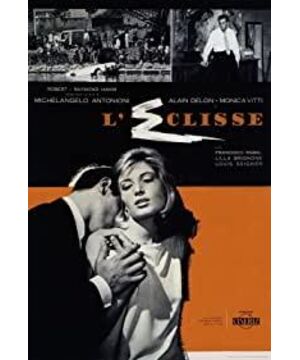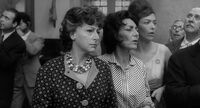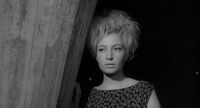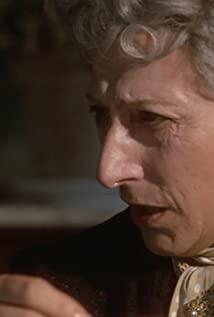If Storaro narrates with light and shadow, Antonioni narrates with space. The determination of various spatial relationships serves the plot, and space becomes a role in the film with more narrative functions.
1. The unique meaning of a specific space
In urban imagery, squares and intersections are typical landmarks. The function of the square has changed in modern life, the fast-paced lifestyle has changed the way people date, and the dating location has naturally changed. In "Eclipse", Antonioni shifts the dating place of the hero and heroine to the cross, revealing the transfer of the image and function contained in the urban architectural space. The intersection is more of a traffic function. Their encounters are just chance encounters, which are short-lived and random in modern society. The hero and heroine meet here, implying the ultimate failure of their relationship, like pedestrians passing by in a hurry on the road.
Eclipse ends with a seven-minute empty mirror. The protagonist disappears, and the space displayed on the screen is the place where they usually date, but it presents a clear break with the plot. The camera moves on its own without following the character. What we see are objects such as roads, buildings, bricks, buckets, flowing water, fountains, and the sheer real power contained in the spaces they occupy. The empty mirror is essentially a segment that appeals to human perception. It is a purely audio-visual space, allowing people to perceive the existence of entities that are usually not paid attention to. These objects exist silently, silently recording all the changes in the world from the past to the world. Compared with them, man is just passing by in this world.
Second, the geometric style of the picture composition
In "Night", the heroine wanders alone in the streets, dilapidated buildings, and crying children on the grass. The abandoned old clock, plucked off the wall that is about to fall off by hand... The next shot turns to the high-rise buildings lined with modern buildings. The exterior walls of the buildings occupy most of the picture, leaving only a little blank on the left side of the picture. The heroine enters the painting from the left side and walks along the horizontal line at the bottom of the picture. The proportion is very small, which forms a strong contrast with the outer wall that fills the picture and is visually exaggerated. The depression and loss of the characters in the urban space are about to come out
Fitting of the scene frame. In the scene frame of the picture, other different scene frames are framed, such as: doors, windows, mirrors, counters and other framed settings. When the viewer sees the second scene frame and the third scene frame in the picture, the three-dimensional feeling of the space comes to the face. At the same time, it shows the feeling of being bound and trapped.
Taking pictures of people or scenery behind directly through the glass of windows or doors and windows not only creates a depth-of-field effect, but at the same time, because of the shadowy shadows of mirror images, the shadows of multiple scenes overlap on the same plane, which makes the meaning of the picture ambiguous and the emotion unpredictable. Antonioni once said, "In our hearts, things appear with light spots on the background of fog or shadow." Perhaps he felt deeply that the true meaning of the world and the inner truth are abstract, such as the receding horizon, such as the universe the black hole. Then it is most accurate only when it is visually displayed in a fog or shadow-like mirror image.
Antonioni believes that mental activity is part of reality. The screen space and the real space are connected, and the screen is just a window to life. The audience walks to the window by accident and sees what is happening outside the window. Therefore, their frame is an open space where the visible inside and the invisible outside are combined.
3. Human space
The scene where the heroine of "Red Desert" ran to the hero's hotel. She was emotionally disturbed, talking to herself, and acting neurotic. The space at this time was disrupted again and again with the disorderly movement of the characters, resulting in fragmentation, which was not as continuous as the previous dramatic space. This snakeskin-like arrangement in the interior space lasted for a few minutes, showing the state in which people in the industrial society are suppressed and twisted so that they have nowhere to escape. The audience's perception of "spatial integrity" is completely broken, and their psychology also becomes restless and messy.
Antonioni's film language is forbearance and alienation, and this snakeskin scheduling expresses the violent and turbulent emotional conflicts under the calm surface. In addition, when the female protagonists of "Adventure", "Night" and "Eclipse" have emotional entanglements with men, they are almost always dispatched by snakeskin.
View more about L'Eclisse reviews











